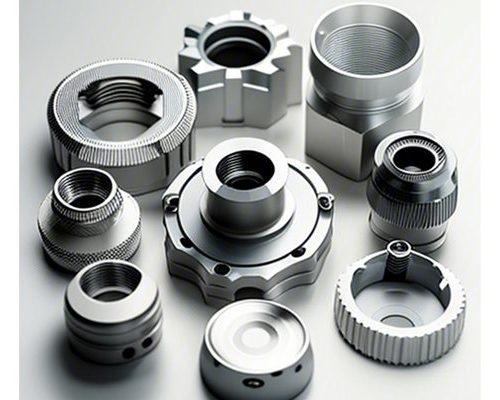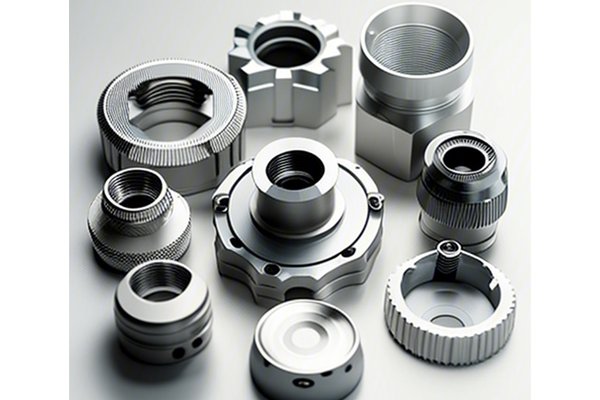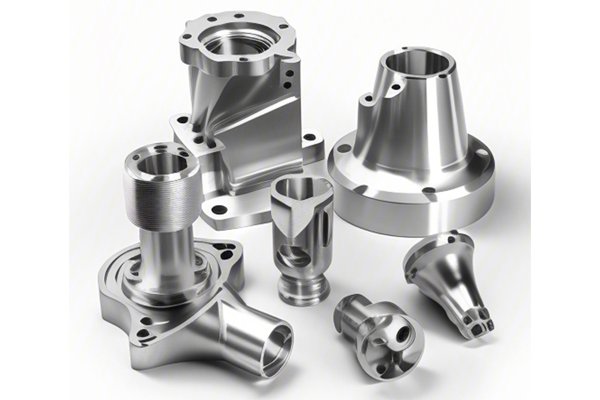Imagine stepping into a sleek, state-of-the-art workshop brimming with high-tech machinery, where pieces of metal and brass are transformed into precise components through a mesmerizing dance of technology and artistry. This is the world of CNC (Computer Numerical Control) machining, where creativity meets engineering precision. But what exactly happens in that workshop, and how does CNC machining shape our daily lives? Buckle up, because we’re about to embark on an enlightening journey through the intricate realms of CNC machining, exploring its applications, benefits, and the fascinating materials that make it all possible.
What is CNC Machining?
CNC machining is like having a smart robot at your disposal, capable of crafting complex parts with incredible accuracy. Picture a conductor leading an orchestra—each instrument plays in harmony under precise instructions. Similarly, CNC machines follow programmed commands to carve, slice, and shape materials like metal, plastic, and wood into intricate forms with extraordinary precision.
This technology replaces the manual skills of yesteryear with automated processes, ensuring that every piece produced is consistent and flawless. Think of the first time you put together a jigsaw puzzle; at first, it can seem challenging, but with each piece fitting perfectly, the picture comes together seamlessly. CNC machining is here to ensure that every piece fits just right, revolutionizing industries from aerospace to healthcare.
The Evolution of CNC Machining: From Manual to Automated
A Walk Down Memory Lane
To appreciate the marvel of CNC machining, let’s rewind a bit. The roots of machining go way back to the Industrial Revolution, when manual lathes and milling machines were the order of the day. Craftsmen, with pure skill and sweat, shaped materials into required forms. However, as the demand for precision and speed grew, the need for innovation was undeniable.
In the 1950s, the introduction of computer technology led to a remarkable transformation. These pioneering machines marked the dawn of CNC technology—all thanks to the visionaries who recognized the potential of combining computing power with traditional machining. It’s like watching a caterpillar evolve into a stunning butterfly! Today, CNC machining is at the forefront of modern manufacturing, breathing life into countless products we take for granted.
How CNC Machining Works
Breaking Down the Process
At its core, CNC machining involves a few key steps, each intricately woven into the fabric of the manufacturing process. Here’s the basic rundown:
The Materials That Make It All Possible
Exploring the Versatile Materials Used in CNC Machining
Just like a chef needs quality ingredients to whip up a delicious dish, CNC machining relies on a wide range of materials to create its masterpieces. Let’s dive into some of the most commonly used materials in CNC machining and discover their unique characteristics.
Aluminum is the go-to material for many CNC projects, and for good reason. With its lightweight and strong composition, it’s perfect for aerospace and automotive applications. Imagine aluminum as the nimble athlete, quick on its feet and capable of high performance. Its excellent machinability means you can create complex shapes without breaking a sweat.
Stainless steel is like the knight in shining armor of the machining world. Known for its corrosion resistance and impressive strength, this material finds its place in industries ranging from kitchenware to medical devices. CNC machining stainless steel can be challenging, but the results are worth it—a robust product that stands the test of time.
With its striking golden hue, brass is not only aesthetically pleasing but also possesses excellent machinability and thermal conductivity. Think of brass as the talented musician who can adapt to any genre. It’s often used in decorative items, valves, and fittings, proving that beauty and functionality can go hand in hand.
Plastic might not sound glamorous, but when it comes to CNC machining, it’s a versatile player. Lightweight, cost-effective, and available in various types (such as acrylic and polycarbonate), plastic parts can be found everywhere—from gadgets to automotive components. It’s like the trusty sidekick who seamlessly fits into any scenario.
Applications of CNC Machining Across Industries
Exploring the Multifaceted Uses of CNC Machining
If you think CNC machining is limited to just one sector, think again! This technology has woven itself into the fabric of various industries, making its mark in numerous applications. Let’s take a closer look at some of the significant areas where CNC machining plays a crucial role.

In the high-stakes world of aerospace, precision is paramount. CNC machining guarantees that each component, from turbine blades to landing gear parts, is manufactured to the exact specifications. Just as a pilot relies on flawless instruments for a safe flight, aerospace engineers depend on the accuracy that CNC machining provides.
The automotive industry thrives on innovation and efficiency. CNC machining is used to produce critical components such as engine parts, transmission housings, and suspension systems. Think of it as the engine behind automotive advancements, driving the industry toward safer and more reliable vehicles.
When it comes to healthcare, there’s no room for compromise. CNC machining produces precision medical devices, implants, and surgical instruments that save lives. Much like the precision of a skilled surgeon, CNC machines ensure that every detail is meticulously crafted to meet the highest standards.
CNC machining is a key player in the consumer electronics game. From the intricate components of smartphones to the chassis of laptops, this technology allows manufacturers to create sleek, compact designs. Picture it as a magician seamlessly pulling gadgets out of thin air—CNC machining transforms ideas into reality.
Surprisingly, CNC machining has also made its mark in the furniture industry. From intricately carved table legs to unique light fixtures, CNC technology enables designers to create visually stunning home decor pieces. It’s where artistry meets utility, allowing for creativity to flourish in interior spaces.
Advantages of CNC Machining
Why Choose CNC Machining?
With its seamless integration into various industries, you might be wondering: what makes CNC machining so appealing? Let’s dissect the myriad advantages it offers that set it apart from traditional machining methods.
One of the standout features of CNC machining is its precision. These machines operate with incredible accuracy, resulting in parts that adhere to exact specifications. Imagine trying to hit a bullseye; CNC machines are the sharpshooters of the machining world, consistently delivering pinpoint accuracy.
Speed is the name of the game in manufacturing, and CNC machines deliver. They can produce parts much faster than manual machining, allowing companies to meet deadlines and drive productivity. Consider it like a high-speed train—once it’s on track, there’s no stopping its progress.
CNC machining can handle intricate designs that would be challenging, if not impossible, to achieve manually. With advanced technology, you can create parts with complex shapes and details. It’s akin to a sculptor creating a masterpiece from a block of stone—CNC machines possess the tools to bring creative visions to life.
Thanks to precise cutting techniques, CNC machining generates minimal scrap material, optimizing the use of resources and reducing costs. It’s like cooking a meal where every ingredient is utilized effectively—no scraps left behind!
Once programmed, CNC machines can run autonomously, producing parts with remarkable consistency. Picture a team of workers performing complex tasks—now imagine having a machine do it without fatigue or error. CNC machining ensures that quality is maintained throughout production runs, no matter the scale.
The Future of CNC Machining
Where is the Technology Headed?
As we glance into the crystal ball, the future of CNC machining looks promising. Advancements in technology continue to drive this industry forward. We’re talking smart machines equipped with AI and machine learning, capable of optimizing themselves for better performance. Imagine having a machine that learns from its experiences—who wouldn’t want that?
Moreover, additive manufacturing, or 3D printing, is beginning to blend with CNC machining, allowing for even more complex creations. The lines between traditional and modern manufacturing are blurring, paving the way for innovation and creativity. Get ready; the CNC machining landscape is evolving, and it’s going to be exciting!
Conclusion: Embracing the CNC Revolution
As we wrap up our journey through the captivating universe of CNC machining, it’s clear that this technology is not just a tool but a catalyst for innovation in various industries. From aerospace to automotive, and everything in between, CNC machining plays an indispensable role in shaping the future.
So, the next time you pick up a sleek gadget, navigate a well-engineered vehicle, or rely on a medical device, remember the magic behind its creation. CNC machining isn’t just about cutting metal; it’s about transforming ideas into reality and pushing the boundaries of what’s possible.
Are you ready to embrace the CNC revolution? The possibilities are endless, and the future is looking bright. Whether you’re a curious soul wanting to learn more or an industry professional looking to get ahead, CNC machining is undoubtedly a topic worth exploring. Let’s dive deep and continue to uncover the secrets of this remarkable technology together!



